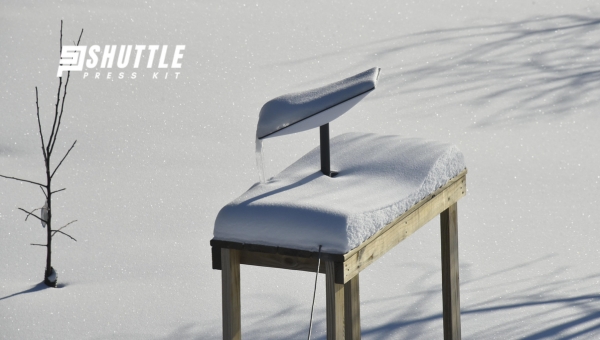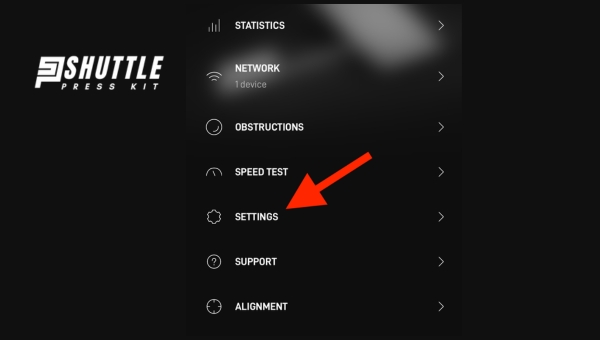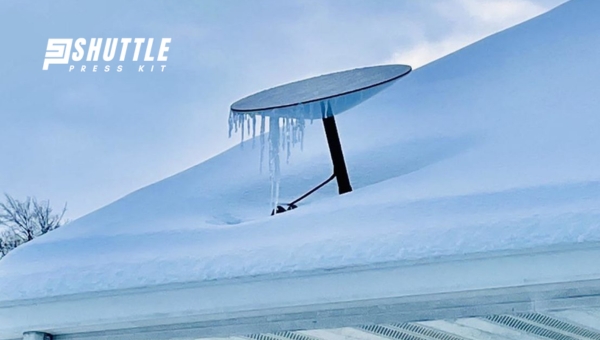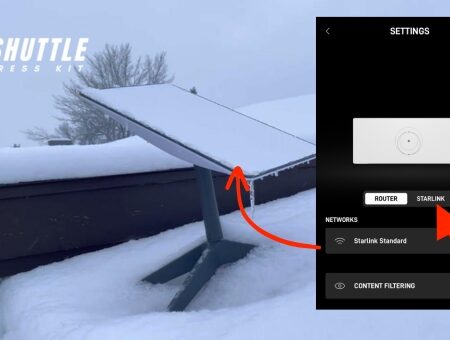As winter blankets the landscape, the futuristic promise of Starlink’s satellite internet faces the age-old nemesis: snow. You’ve invested in this top-notch technology to stay connected, even in remote, frosty locales—but what happens when Jack Frost comes nipping? Fear not; I’m here to decode precisely how to tweak those vital Starlink snow melt settings, ensuring you keep clicking and scrolling through the iciest of days.
Starlink’s innovative dish comes equipped with a feature as hot as your favorite summer day—snow melt mode. This clever setting is like having a little sun strapped right onto your dish, ready to clear off those fluffy snowflakes that dare compromise your connection. By following my simple steps for adjusting your Starlink’s snow melt settings, you can lounge worry-free while your satellite dish braves the storm outside.
Understanding Starlink’s Snow Melt Feature
When winter blankets everything in a thick layer of snow, it’s no surprise that our beloved tech can take a hit too. That’s where Starlink’s clever little feature, the Snow Melt Mode, comes into the spotlight.

I want to chat about what this nifty setting does and why tweaking it just right is your ticket to staying connected even when the weather outside is frightful.
What is Snow Melt Mode?
So you’re picturing your Starlink dish sitting snug on your roof and along comes a snowstorm, dumping all sorts of fluffy chaos on top of it. What happens next? Well, if you’ve got Snow Melt Mode turned on:
- The dish kicks into gear with its built-in heater.
- It keeps ice and snow from sticking and accumulating.
- Your internet says fast and reliable, even when Jack Frost is doing his worst.
Think of it as giving your dish its own little parka so it can keep chugging along without freezing up or losing signal. This setting isn’t just about keeping the snow off; it’s about making sure you don’t miss out on any binge-watching or important emails when the winter wonderland arrives.
Importance of Adjusting Settings
Now let’s get down to brass tacks—why fiddle with these settings?
- Performance: Just like you wouldn’t wear flip-flops in the snow (trust me, not a great idea), your dish needs to dress appropriately for chilly temperatures.
- Longevity: By keeping that dish clear, we ain’t just talking short-term wins; we’re investing in our equipment’s future.
Adjusting your settings has real perks:
- Stop Snow Build-Up: Heavy pile-up could mean time-outs for your connectivity. We don’t want that.
- Protect Your Gear: Ignoring this feature might give Father Time an edge over our equipment way sooner than we’d like.
Getting these settings dialed in means we’re playing smart—not just for today but for all those snowy tomorrows too.
Also Read: Starlink Port Forwarding Guide: Steps for Secure Connections
Starlink Snow Melt Options
The dish has built-in options to deal with snow accumulation which are essential for maintaining internet connectivity in regions that experience heavy snowfall. Here’s a look at the different settings available:
- Off: This option means that the snow melting feature is disabled. Users might select this to conserve energy or when the risk of snow build-up is minimal.
- Automatic: When set to automatic, the dish determines on its own when to initiate heating in order to melt off any accumulated snow based on conditions and presence of obstructions.
- Pre-Heat: Before an expected snowfall, users can manually tell their Starlink dish to warm up ahead of time. This preemptive action can help prevent snow from settling on the surface and interfering with signal reception in anticipation of inclement weather.
How To Adjust The Starlink Snow Melt Settings
When winter rolls around and the snow starts piling up, us Starlink users gotta think about keeping our dishes clear for the best internet connection.

Lucky for us, Starlink’s got a feature called Snow Melt mode that keeps things running smoothly. Today, I’m gonna walk you through how to adjust the Starlink Snow Melt settings.
Got everything in front of ya now? Good – let’s get down to biz:
- From those settings, we talked about finding and seeking out ‘Snow Melt’ or similar terms.
- There’ll be an option to toggle it on or off. Keep it on to avoid snow buildup; no brainer during winter months!
- Below that toggle will be a slider bar or plus/minus signs that control how hot our dish gets during its snow-melting mission.
- If just a little snow is expected – nudge those settings down some; big blizzard coming? Crank that heat up! Not too much though—we don’t want fried circuits!
Just so y’all know—the setting saves automatically, so no need hunting for any save button.
Farmers don’t plow fields with toothbrushes; they pick tools fitting their tasks! Same goes with Snow Melt; picking just right amount of warmth saves energy without sacrificing performance—a balance between dish health and keeping net fast as heck!
Tips & Tricks for Managing Snow Melt Features Efficiently
When you’re dealing with a cutting-edge piece of tech like your Starlink dish, you want to make sure it’s working at its best, especially when the weather outside is frightful.

But let’s talk about keeping that dish clear without cranking up your electric bill sky-high, okay?
- Stay Ahead of the Weather: Keep an eye on the forecast. If a snowstorm is knocking on your door, get ahead of it by ramping up those settings before those flakes start falling.
- Timing Is Everything: The best time to adjust? Early morning or late evening. Why? Well, these are typical off-peak power times which might save you some bucks on electricity.
- Manual Checks: Pop outside every now and then to take a look at that dish. If it’s got ice forming on top despite being on snow melt mode, it might be time for an adjustment.
Remember guys and gals, using the snow melt feature is all about balance: keeping that dish warm enough to zap snow and ice while not going overboard.
Also Read: Starlink Port Forwarding Guide: Steps for Secure Connections
FAQs
Is there an additional cost associated with using the snow melt feature?
No, the snow melt feature is included with your Starlink service at no additional cost.
Can adjusting the snow melt settings affect my internet speeds?
Generally, no. The snow melt feature is designed not to impact your internet speeds significantly.
How can I tell if my dish’s temperature isn’t adjusting correctly?
If you notice snow or ice accumulation on the dish despite having the Snow Melt mode on, it might indicate a malfunction.
How To Adjust The Starlink Snow Melt Settings if I’m not tech-savvy?
Log in to your Starlink account and navigate through user-friendly options to adjust settings; no technical expertise required.
Is there a way to schedule automatic adjustments for this setting based on weather forecasts?
Currently, Starlink hasn’t provided automated adjustments based on forecasts; it requires manual changes via your account settings.
Also Read: How to Cancel Starlink? – Quick Steps for Opting Out
Conclusion
Adjusting the Starlink snow melt settings isn’t just beneficial—it’s necessary for maintaining stellar connectivity amidst snowy climes. We’ve delved into how to navigate your account, where to pinpoint the snow melt controls, and the step-by-step for tweaking them just right.
We also covered best practices for managing these features with an eye on energy usage. And while malfunctions are rare, knowing when to fix them yourself or holler for support is crucial. Remember, Starlink wants you dialed in and satisfied—no matter the weather. So go ahead and personalize those dish settings; there’s a community of fellow users and Starlink support ready if you hit a slippery slope.
